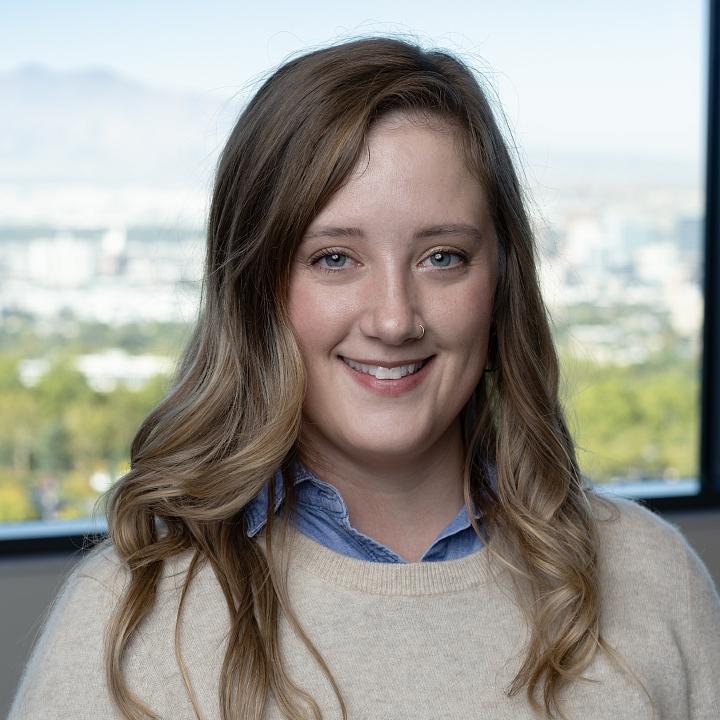Jump to:
PROGRAM OVERVIEW AND SCOPE OF TRAINING
Our one-year ACGME Nuclear Radiology Fellowship at the University of Utah, Department of Radiology and Imaging Sciences provides additional training to diagnostic radiologists in nuclear imaging and theranostics. The department has two state of the art clinical PET/CT scanners and one research scanner. During the fellowship trainees will gain vast experience in general nuclear imaging and in the various applications of PET/CT and SPECT/CT imaging, including the areas of oncology (with the newest tracers), infection imaging, and in evaluation of neurodegenerative disorders. Fellows will also have the opportunity to work with the latest theranostic agents and will have the opportunity to participate in standard therapies for benign and neoplastic thyroid diseases.
In addition to broad clinical exposure, fellows participate in the education of our residents during educational conferences, journal clubs and case correlation sessions. They also work closely with residents that are on the nuclear medicine service. The goal of the fellowship is to train outstanding clinicians, educators and researchers.
We encourage all eligible program graduates to take the certifying examination offered by the applicable American Board of Medical Specialties (ABMS) member board or American Osteopathic Association (AOA) certifying board.
Academic Pursuits
Academic time is provided to facilitate preparation for multi-disciplinary conferences, resident conferences, and inter-departmental teaching conferences.
Fellows must engage in a scholarly project that demonstrates their competence in the fundamentals of research by the completion of and/or participation in one of the following projects, but not limited to:
- Laboratory research
- Clinical research
- Analysis of disease processes, imaging techniques, or practice management issues
The results of such projects should be disseminated in the academic community by either submission for publication within a printed journal or online educational resource, or presentation at departmental, institutional, local, regional, national, or international meetings.
Elective Time
Fellows are encouraged to pursue electives with other sections within the department. Time available is dependent on the availability of the accepting service.
Eligibility
All required clinical education for entry into ACGME-accredited fellowship programs must be completed in an ACGME-accredited residency program, an AOA-approved residency program, a program with ACGME International (ACGME-I) Advanced Specialty Accreditation, or a Royal College of Physicians and Surgeons of Canada (RCPSC)-accredited or College of Family Physicians of Canada (CFPC)-accredited residency program located in Canada.
Prerequisite experience for entry into the fellowship program should include the satisfactory completion of a diagnostic radiology or interventional radiology residency program that satisfies the requirements in the above paragraph.
Fellowship programs must receive verification of each entering fellow’s level of competence in the required field, upon matriculation, using ACGME, ACGME-I, or CanMEDS Milestones evaluations from the core residency program.
International Medical Graduates
International Medical Graduates must meet the following eligibility criteria:
- Must be ECFMG certified before training begins on July 1.
- Must have a clinical J-1 visa before training begins on July 1 for ACGME Accredited training.
- Must meet the GME and Utah licensing requirements.
We are not accepting applicants for the four-year ABR Alternate Pathway at this time.
Apply
To apply for a fellowship position please email your completed application and supporting documents to our program manager, Jessica Simpson.
We have pledged to follow the fellowship embargo program proposed by the Society of Chairs of Academic Radiology Departments (SCARD). We are committed to a fair fellowship application process that allows fellows the time to make an informed decision about their sub-specialty training. Applications are accepted after November 1, and the preferred application date is November 10th. Our interviews are virtual and will be held between January and March.
Summary of important dates:
- November 1: Applications accepted
- January 8: Interviews begin
- March 31: Interviews end
Note that applicants have until January 15th to accept or decline any offer made before January 15th. For any offer made after January 15th the candidate has a one-day grace period to accept or decline the offer.
We do not participate in the National Resident Matching Program (NRMP), so applications will be accepting on a rolling basis after the SCARD dates have passed.
Application Overview
We recruit one fellow per year and strive to compose a diverse class of trainees that have unique talents and perspectives to enrich our program. We encourage qualified applicants from all regions of the country, those with unique backgrounds, women and under-represented minorities to apply. University of Utah is a wonderful place to train!
To process your application, we require the materials listed below:
- Completed application
- Curriculum vitae
- Personal statement
- USMLE Transcript*
- Medical School Transcript
- Medical school diploma
- Medical Student Performance Evaluation (Dean’s Letter)
- Three letters of recommendation (one must be from current program director)
- Copy of the Dean’s letter from your medical school or ECFMG certificate
- Evidence of research activity (may be listed on your CV)
- A photo of yourself
* COMLEX scores may be substituted for USMLE ® scores.
International medical graduates must include the following in addition to the above:
- Copy of green card, J-1 clinical visa, or documentation of US citizenship
- Valid ECFMG certificate with Clinical Skills Assessment certification
- Evidence of previous training in the United States (if applicable)
Why Utah?
From sheer beauty to being the right size to the global influence of our health system, Utah has way more to offer than people know.
Living in Utah
From restaurants and museums to sports and outdoor events, check out our definitive guide to living in Utah!
Verifications
We use the standardized “Verification of Graduate Medical Education Training” (VGMET) form released in 2018 by the ACGME, AHA, NAMSS, and OPDA. If you have a customized form, require program director signature and/or our institutional seal please select the appropriate option and email us the form.
A charge of $25.00 - $55.00 will be assessed for each comprehensive letter of verification, payable via credit card using our on-line payment portal (or by check, if submitting the request by US mail). This charge is in place to offset the fees we commonly incur while credentialing our own incoming residents and fellows. We apologize for the inconvenience.
Once the request has been submitted via the link below, please e-mail a completed Authorization for Release of Information form to RadiologyResidency@utah.edu.
When we have received the payment and trainee authorization, you will receive the completed verification of training form via e-mail. If you have further questions, please call 801-581-2868.
The University of Utah School of Medicine does not discriminate on the basis of gender, sexual orientation, race, age, religion, color, national origin, disability, or veteran’s status. In accordance with the requirements of The Americans with Disabilities Act (ADA) and Section 504 of the Rehabilitation Act of 1973, as amended, (Section 504), the University of Utah provides reasonable accommodations to qualified individuals with disabilities, so that they may fully participate in its academic programs, employment opportunities, medical services, programs, and events.




